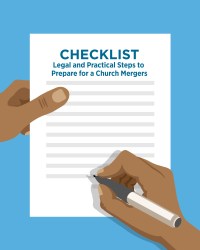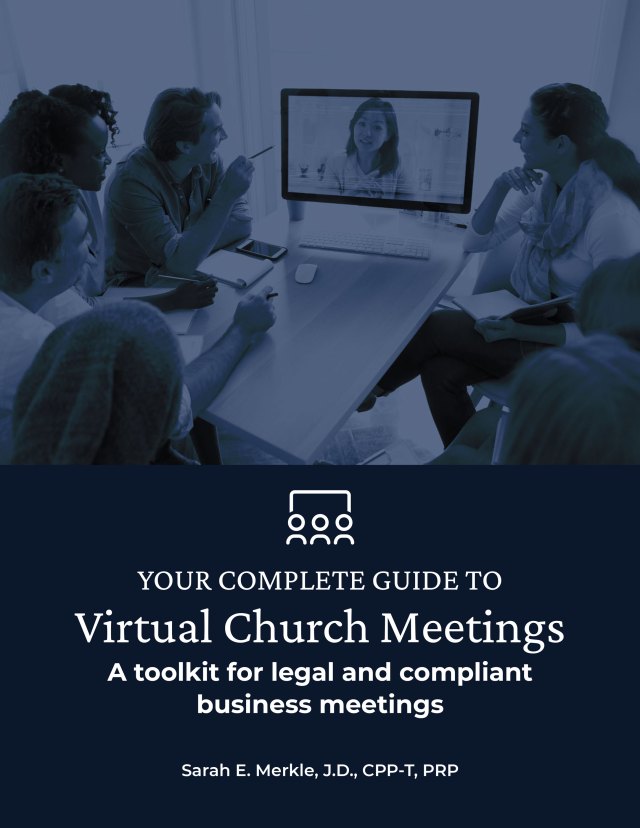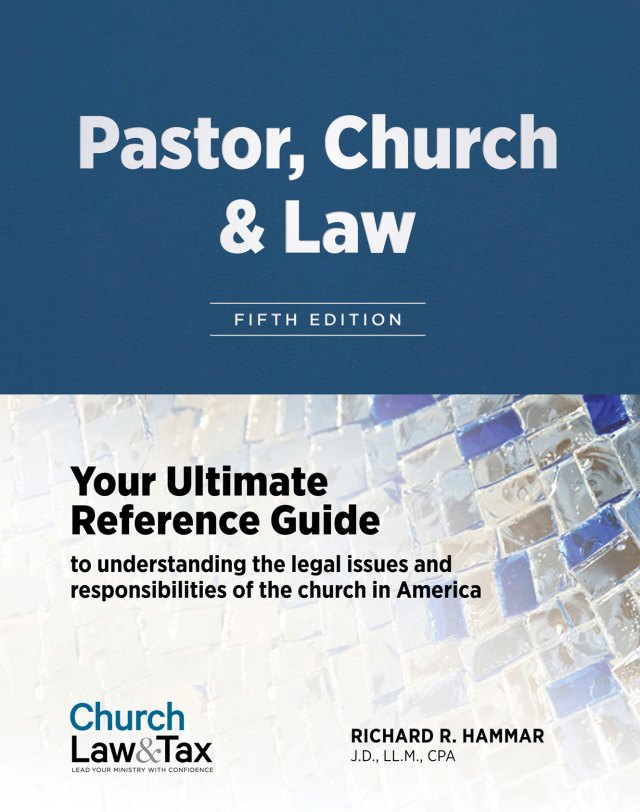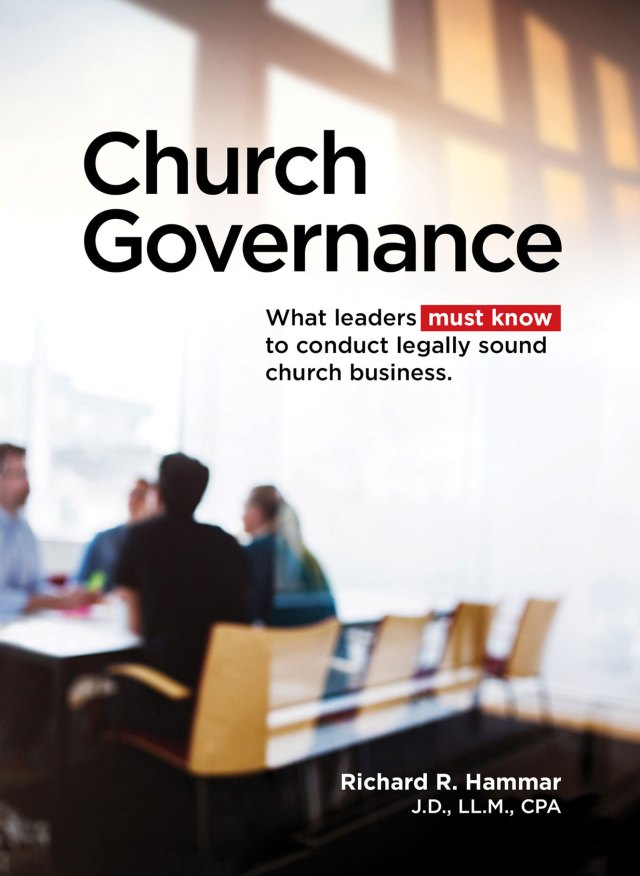The steadily changing landscape and makeup of the church in America have prompted some churches to weigh their long-term futures.
A merger may be a great option for keeping a struggling church alive in a new and fresh way. It can also be a great way to expand the footprint of an otherwise healthy church. No matter the circumstance, if a merger is to be pursued, it should be planned well. As an attorney, I have seen numerous outcomes. The goal, of course, is for it to go well. When it does, it’s because a host of considerations, both substantive and practical, made it possible. My four-part series is designed to guide you step-by-step (see sidebar to the left).
Options for structuring your merger
Church mergers are on the rise.
“Thanks in large part to the innovations of the multisite movement, [mergers] have become a viable, even positive, option for churches on the brink of closure—and for many that are doing just fine,” Christianity Today reported in 2019 in an article titled “The New Math of Church Mergers.” Add to this the financial concerns created by the ongoing pandemic and an even greater number of congregations might be seriously considering the merger option.
But what exactly is a merger and how is it done? There are several legal options for how to properly structure a merger. The term merger is often used in a broad sense for how two (or more) churches come together as one. This may be done by a joint venture, consolidation, asset transfer, or other arrangement. However, I have chosen the term merger for simplicity’s sake. As a general matter, there are three ways a merger can be done.
Option 1: Church A merges into Church B (the surviving entity)
Under this option, both the assets and the liabilities of Church A are transferred to Church B. Therefore, it’s critical that there is great transparency between the parties. Additionally, tax laws governing exempt organizations do not allow the assets of a church to be transferred to any individual. Rather, they must go to another tax-exempt organization with a similar mission.
Under this option, Church A’s assets would go to Church B, the surviving entity. This is likely the concept most people visualize when they think of a merger. This option fits where Church A is a smaller congregation with minimum assets and smaller footprint compared to Church B.
Option 2: Church A dissolves, leaving its assets to Church B after all of Church A’s liabilities are disposed
For this option to work, an asset purchase agreement would need to be prepared. The agreement would need to outline all of the assets and liabilities of Church A, along with setting a certain date to complete the winding down of Church A. Thereafter, any remaining assets of Church A would need to be legally transferred to Church B.
Unlike Option 1, no debts or liabilities are transferred to Church B, so in theory, the transaction between the parties should be more streamlined in that sense. On the other hand, most states have statutes requiring that notice be given to creditors and to the attorney general before an entity can dissolve. So, while the merger between the two churches may be less complex under this option, the pre-merger responsibilities for Church A are a precursor to the merger process. This option may be a realistic choice when Church A has no (or few) liabilities and mostly liquid assets.
Option 3: Both Church A and Church B dissolve and form a new Church C
This third option, legally known as a consolidation, “is sometimes chosen because of the reluctance of either partner to be the corporation that dissolves while the other survives,” notes the authors of The Nonprofit Mergers Workbook. It is also, perhaps, thought of as a way to create a fresh start for both congregations.
This was the option selected when I assisted two synagogues, each with long histories of more than 150 years, and respective congregations with strong legacies of family memberships. Each congregation wanted to preserve its individual history and identity while creating something new and more enduring for a successful future. (Just like in the Christian church, there are many other faith communities experiencing decreases in attendance, giving, and general participation, but those communities still possess unique dynamics and histories that they want to preserve while establishing futures that allow them to continue to exist.)
Note. I should pause here to acknowledge that I realize some churches have chosen not to incorporate. A church that operates as an unincorporated association is not prohibited from merging, although this may be one of the many matters contemplated when assessing the relative strengths and weaknesses that each church brings to the table.
Learn about the legal ramifications of unincorporated churches, and the personal liability they can pose to their members, in Church Law & Tax’s Legal Library.
Why a church merger?
Mergers are a well-known reality in the for-profit world, but church mergers are too often overlooked by congregations as viable means of growing alliances. Unlike the hostile takeovers of a fierce competitor, such as those studied in business schools and depicted in Hollywood movies, the purpose of a church merger is more often about missionally minded matters.
For example, in one successful merger, an active seven-year-old church (Church G) with about 200 members was thriving. Having outgrown the school the church rented, the church’s leaders weighed buying a facility.
Background
The founding pastor, a trained educator who loved building a strong curriculum of teaching in the church, found his greatest joy in leading Bible study. His church also had a thriving music ministry, which excelled, in part, because of his own musical abilities. However, he found the weekly Sunday sermon prep increasingly becoming a burden. He did it, but he didn’t feel it was his strength.
Just a few miles away, Church H owned a sizeable building led by a pastor who loved preparing Sunday morning messages, but he did not feel gifted at developing the teaching components of the ministry. The church had also been without a music ministry for months after its primary music leader left.
The two churches came together and found that where one lacked, the other had strength. I was able to assist in ensuring that my client (which merged into Church H) was able to exit its lease without penalty, advise the board on how to properly navigate the governance requirements for the merger, prepare the needed state dissolution documents, and overall navigate a high-stress situation.

Other circumstances or scenarios that might bring a church to consider a merger include the loss of the senior pastor; yearslong declining membership; financial struggles; and unexpected expenses, such as longstanding facility repairs, that swallow up budgets.
While a merger can be a sought-after solution in challenging times, it is also a great way to expand the existing footprint of a healthy church. For example, I’ve been able to help churches merge and create additional campuses, thereby scaling the growth of the church at a rate not otherwise likely. This expanding geographic footprint could mean connecting churches that are in relative proximity or expanding the church to add a location in another state or town.
Key strategic questions church leaders should ask
Before merger discussions begin, the leaders from the churches involved should ask the following questions:
- What are the primary considerations for a potential church merger?
- Would my congregation benefit from a merger?
- Would the churches accomplish more as a combined entity than they would as separate ones?
- Are the churches’ doctrines, visions, and cultures sufficiently similar to result in a successful merger?
Exploring the potential benefits of a church merger
The Christianity Today article quoted earlier points to a 2016 Barna study finding that “89 percent of churches that underwent a merger or acquisition reported a positive result.” When a church merger is successful, the benefits can last for decades.
With a successful merger, the combined churches can experience one or more of the following benefits:
- increased programming
- stable senior leadership, especially after one church loses a key pastor or senior leader
- increased revenue
- expanded campuses or geographical locations
- greater visibility
- increased assets
- resources to afford deferred facility repairs or needed renovations
- boosted attendance, especially among congregations with dwindling numbers
- increased racial and generational diversity
- expanded capacity capitalizing upon the unique gifts of each church’s leaders
From the list above, two specific outcomes especially stand out.
One, expanding the demographics of the body of Christ has been a notable consideration for some mergers, especially as many churches age. Building an alliance with a younger church, which often includes younger church leadership, can help an older church construct a framework for succession and longevity.
And two, some churches have found a merger broadened their racial diversity. By example, a church located in the same area for decades recently revealed the community’s demographics had changed over time. However, the congregation did not reflect those changes. The church boasted a 500-seat sanctuary, but drew only dozens, all of whom lived outside of the community. This church connected with a nearby congregation in need of larger worship space. The church also also more closely reflected the community’s diversity. Together, both churches moved past their respective limitations and welcomed more people in the process.
The potential downsides of a church merger
As mentioned earlier, mergers have been a staple in the for-profit arena. When done properly, a merger can be a great benefit to the merging churches. However, when done improperly or illegally, a merger can create difficult hardships.
Example
One such example involves Church X, which existed for over 20 years and amassed over $1 million in liquid assets.
The pastor of Church X felt it was time for him to end his pastoral ministry. He also felt led to join forces with a local church that was thriving. He shared his vision with the governing board. They unanimously voted in favor of a merger with the larger, local Church Z. In fact, the board of Church X transferred its assets to Church Z. It also invited its entire congregation to begin attending Church Z.
Although Church X was a congregational church, the members were not given the opportunity to vote on the merger. Moreover, there was a state statute requiring notice to the membership when there is an intention to transfer all, or substantially all, of the assets of the church. Neither of these preliminary conditions were met, and the disgruntled members sued.
While the court decision in this case is still pending, the lessons from it are apparent: a merger is more than a spiritual coming together. It is a legal process with longstanding effects on all parties involved. The value of doing the needed due diligence upfront (see below) to ensure each required step is completed correctly is well worth the effort.
Example 2
In another example, a denominational church combined resources with another church in its denomination. The two churches brought together their employees and changed their name to reflect a mutually agreed upon “new” church, believing they had completed a merger since the denomination had recorded the two churches as merged. However, confusion with state authorities and the Internal Revenue Service (IRS) followed, since the names and employer identification numbers (EINs) of the two churches remained on the books and now conflicted with the name and EINs of the merged church.
Due diligence
While there are missional reasons why a merger might make sense, choosing to merge should only happen after proper due diligence is performed. What is due diligence? Due diligence involves a process of closely and methodically reviewing the legal and financial situations of the churches seeking to merge.
Two intentional reviews can help achieve the needed vetting:
- A legal due diligence review, which is a kind of legal audit. Each church undertakes a comprehensive examination of the other party’s (or parties’) legal status and risks, examining the articles of incorporation, contracts, legal claims and pending and current litigation, human resources and benefits programs, real estate ownership, and other issues.
- A financial due diligence review, which is usually less comprehensive than a full financial audit. The organization performs an examination, usually based on the other party’s (or parties’) past audited financial reports, to obtain an accurate and complete picture of the current financial positions and risks.
Due diligence should never be neglected for the good of all parties involved. Another compelling reason is this: As Jerald Jacobs notes in The Legal Guide to Nonprofit Mergers & Joint Ventures, “courts have held that the members of the governing board . . . can be personally and individually responsible if the results are untoward and the board members failed to closely examine the transaction.”
It is very important that each congregation have the proper neutral third parties help them make the best decisions. Typically, attorneys handle legal due diligence while accountants handle the financial due diligence.
Given the nature of the information potentially shared between the parties, the churches should reach a premerger confidentiality agreement before serious talks begin. At its core, this document should note the merger is an expression of the interests of the parties, and that they will enter into a level of previewing relevant information from the other, all while keeping any and all information received confidential. Additionally, there should be a written nondisclosure agreement between any key employees who may be a part of the early discussions.
Consider other options besides merging
Churches are merging today for many reasons. However, if a church decides a merger would not be beneficial, either because it isn’t appropriate, it isn’t a good fit, or the timing is not right, two or more organizations may find other ways to work together to share resources and better serve the community.
Those other opportunities could include a cost-sharing agreement allowing the churches to contribute costs for employees, administrative needs, and building operations; a joint agreement for the sharing of space for programming; connecting with a denomination that may have available property; or subleasing. (These options are detailed in Part 4.)
Weighing the benefits and pitfalls
Declining membership and financial challenges have spurred some church leaders to contemplate a church merger. The potential benefits are many. But potential pitfalls also loom. Selecting the merger strategy that fits your circumstances and answers key strategic questions about your church and the potential partner church(es) are the basis for a merger that creates the best harmony, rather than the sounds of discord.
Also in this series:
- Part 2: The Documents Needs for a Successful Church Merger
- Part 3: Deciding Factors for a Sound Merger
- Part 4: Finalizing a Merger



